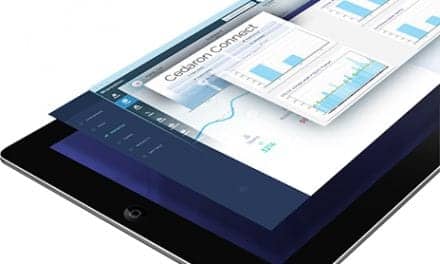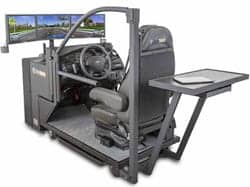 |
How many clinical directors have pored over patient records scrawled in illegible longhand, rife with data faux pas, only to despair: “There must be another way!”
The current generation of documentation software has been engineered to help resolve the chaos that can emerge from handwritten medical documents. Paper documents can be not only labor-intensive to create—requiring a layover at a data entry desk—but risk factual inaccuracy from breakdowns in translation. At a provider’s bottom line, sloppy work can nullify reimbursement, and interruptions in the money trail can be enough to push a facility director to consider the move to electronic records as a long-term fix to waste and error.
THE REALLY BIG MONEY
Sticker shock and the cost of implementing a software documentation package across an enterprise are rarely more than a stone’s throw apart. Pricing for packages that include multiple-user licenses has entry points that approach $5,000, and upgrades, training, and expanded functionalities inflating the price tag in ways that are not insignificant. Once the systems go live, however, what was once cause for sticker shock gradually begins to appear as money well spent.
“We put off purchasing a software documentation system for so long because it was thought to be too expensive,” says Bob Schaal, PT, recalling the trepidation with which Nueterra Healthcare, Leawood, Kan, approached its decision earlier this year to purchase and implement a documentation software package. Schaal is vice president for the physical therapy division of Nueterra, which has 27 freestanding therapy facilities and operates more than 50 outpatient surgery centers and surgical hospitals nationwide.
“The system paid for itself in months,” Schaal says flatly. “We saw an immediate improvement of up to 13% in what we were getting reimbursed. Our therapists didn’t start treating any differently, but the efficiencies we gained showed up directly in our reimbursements.”
FACE THE FEAR—DO IT ANYWAY
Schaal says Nueterra’s purchase evaluation spanned several months. During that time, Schaal witnessed a succession of product demonstrations and worked through lunches with nearly everyone at the company’s C-level to assess needs, crunch numbers, and carefully measure the risks against dollars and cents.
To Schaal, the evidence spoke clearly: “You’ve got to bite the bullet.”
Despite the potholes likely to appear through start-up, the decision makers who approved the purchase forged ahead, optimistic about achieving a net financial advantage with the new system by closing gaps in record keeping, billing processes, labor costs, and compliance—points through which revenues historically had been allowed to escape. Schaal had survived previous platform transitions at other facilities, and anticipated bringing the new system online at Nueterra would not be done entirely without growing pains.
“I’m not going to sugar coat it,” Schaal says. “It takes a couple of weeks for training, and the therapists themselves don’t get very comfortable with the system for about 6 to 8 weeks. And that 6 to 8 weeks is hell if nobody’s used the system before,” Schaal says.
Newly minted PTs who have computer skills freshly honed at college seem to adapt quickest to the electronic systems, Schaal notes. Veteran therapists, however, who have practiced for years only with hand-written notes can find the adoption curve uncomfortably steep.
BACK IN THE BLACK
After the dust settles and technical glitches subside, clinical users begin to build their confidence and expertise with the components of the systems, and a shift in the wind becomes apparent.
“We now know that when we close a note, we’re going to be Medicare compliant,” Schaal says. He characterizes the benefit as “huge,” and considers it among the most significant long-term efficiencies that help recoup the system’s start-up cost.
“So many PTs handwrite notes that you can’t read. If you have to send in your workers’ compensation notes, and the workers’ comp office can’t read the notes, guess what? They’re not going to pay you!” Schaal says.
To stem the flow of revenues lost to bad billing, Nueterra relies on an interface that connects the system’s physical therapy documentation functions to its billing functions, according to Schaal, who emphasizes that the company specified this functionality as one of the system’s “must haves.” The Web-enabled documentation software does away with traditional workflows that required PTs to fill out billing sheets at the end of a shift, and instead enables PTs to capture billing data directly through their notes—allowing that billing data to be automatically extracted when a note is closed.
“PTs are famous for not charging for everything they do,” Schaal observes, “so this way, all the charges are captured.”
To help PTs avoid billing oversights, systems with proactive alerts caution PTs against scheduling treatments that some insurers may consider “unauthorized” and refuse to pay.
“A doctor may prescribe 12 therapy sessions, but an insurer will authorize only six, and require you to call back at the end of six visits to get authorization for more.
“If you don’t have a good system in place, you forget after six visits to call the insurance company, and after about nine visits, you realize the last three visits were unauthorized, and you’re not going to get paid for them,” Schaal explains. The “flags” sent by the software deploy well before the point when nonauthorized visits might occur.
Schaal considers the feature “one of the single biggest things” that maximize reimbursement revenue and sustain return on the original investment. “In the big picture,” he says, “you see fewer visits that aren’t going to be paid for.”
HOPPING A TO Z
For decades, film and literature protested the idea of humans and computers sharing the control of data with computers—from the cautionary tone of WarGames to the outright cyber-phobia preached by 2001: A Space Odyssey. In the real world of managed care and reimbursement, however, the relationship between man and machine is necessarily symbiotic, and the only real decision involving computers in a documentation context is how to accessorize the boxes with the proper set of functional add-ons.
Today’s top-selling documentation systems can be customized to perform an expanse of data-handling functions tightly specified to physical therapy facilities. Most leading vendors build applications on widely used programming languages that include C++, Visual Basic, Java, FoxPro, and Microsoft .Net. These commercially available programming tools provide a framework for packages that can be tailored with marked adaptability. The documentation applications can be used with desktop, laptop, or tablet PCs, and deploy on a variety of Microsoft operating systems.
Inside the clinic business office, most leading software solutions are designed to streamline processes and—ultimately—reduce costs by providing electronic solutions for tasks such as patient scheduling, patient evaluations, insurer correspondence, billing, and accounting.
On the clinical side, a wealth of documentation can be created, captured, and used for reference by staff, including initial evaluations, daily notes, progress notes, and discharge notes. The technology also provides remote access options to PTs, OTs, speech therapists, or other clinicians who need to access information from outside the facility.
According to Schaal, flexibility flatters the bottom line.
“Maybe you have a PT who’s a spine specialist. You preload the system so that the evaluations and related reports and data are tailored to that specialty. Systems can even be customized for special tests,” Schaal says. “It can be time-consuming to set up, but over time you take advantage of those functions you repeat.”
Schaal also points out that keyboard-entered narratives were not allowed in the Nueterra shopping cart during its search for a software solution. “This whole system is based on a tablet and stylus the PT carries around. The screen is nothing but a series of drop-down boxes, and using it is point-and-click.
“It’s that point-and-click concept that creates the note and adds to the system’s efficiency,” Schaal says.
Procedure or diagnosis codes also can be easily added to Nueterra’s documentation package, Schaal says, and he recommends that purchasers shopping for their own software documentation solutions insist on a system that can keep pace with the flux and flow of Medicare policies and regulatory concerns.
“We now have standardized documents for the physician, insurance company, workers’ compensation, whoever. In the past, we’ve had problems with payors because they couldn’t read something and didn’t know what it meant,” Schaal says. “We never get that anymore.”
The quality of technical support is crucial in the period that bookends a go-live date, Schaal says, and he emphasizes that responsive customer service and technical support can change the face of the implementation process—for better or for worse.
“If something happens and you can’t log on to the system, and you go 2 hours without being able to get your notes or pull up the patient’s notes from their last visit, that is incredibly, incredibly stressful.” Once a system is up and breathing, however, Schaal considers it a potent tactical resource that complements an enterprise-wide strategy to become more efficient, particularly in a climate of managed care, and at a time when reimbursement rates seem to crawl continually downward.
In June, the New England Journal of Medicine reported fewer than one in five doctors in the United States had moved to adopt electronic health records, despite the improved quality of care many physicians associated with the use of electronic records. Cost has been identified in many reports surrounding electronic documentation as the most frequent barrier to use.
Schaal’s attitude toward the expense is sympathetic, but his belief in the payoff is unwavering.
“Yes, there is an up-front cost, but it provides a definite savings in time and money, and you’re going to benefit over the long run,” Schaal says. Then he adds: “And if you spoke to any of our therapists who have used this system for 6 months or a year and asked them if they ever want to go back to the old way of doing things, I think they’d say there is no possible way.”
Frank Long is the associate editor of Rehab Management. For more information, contact .





